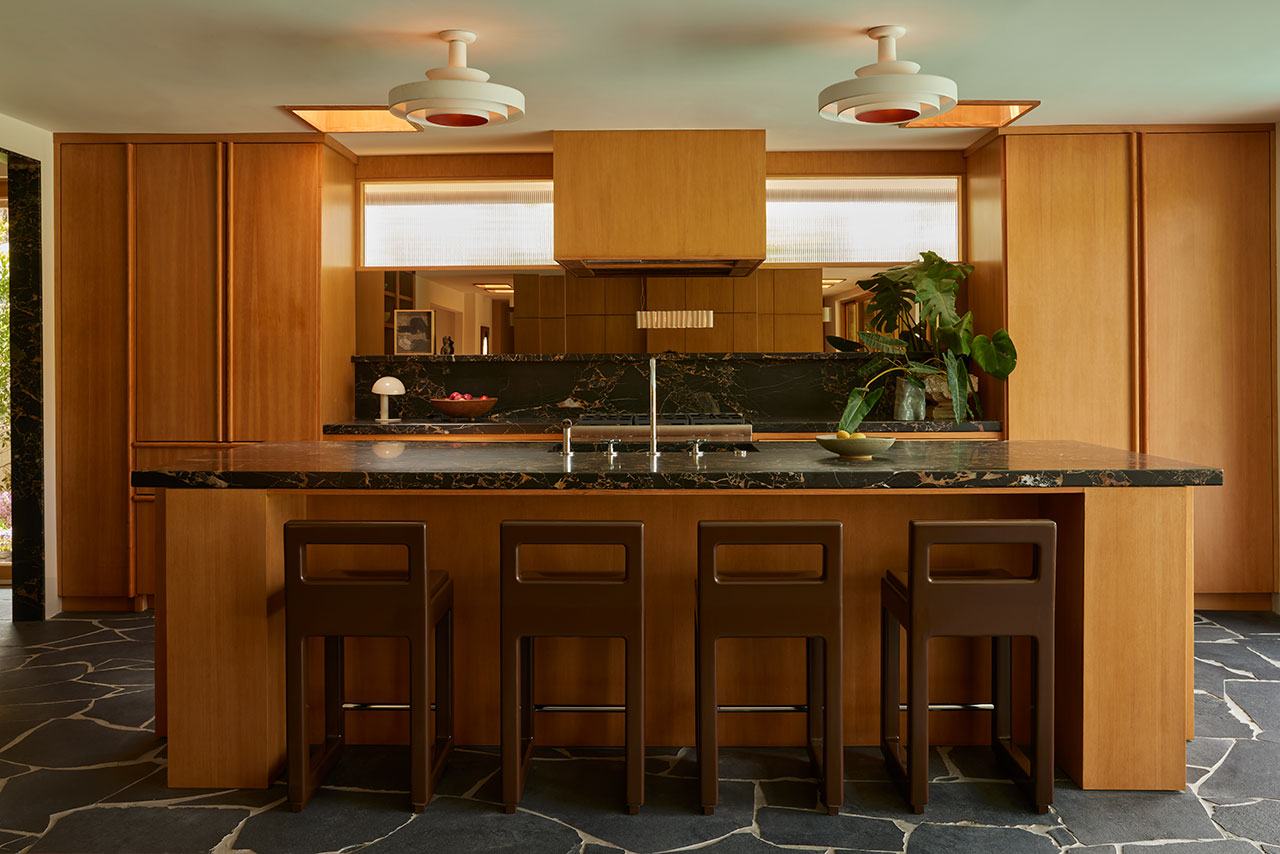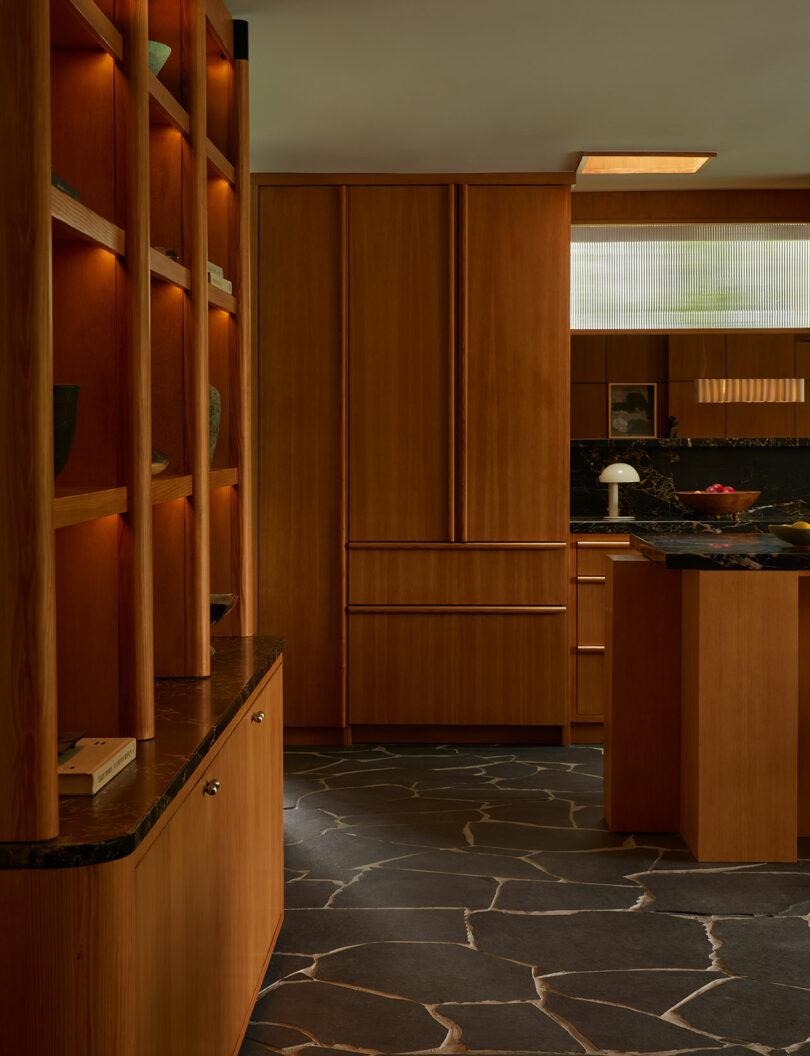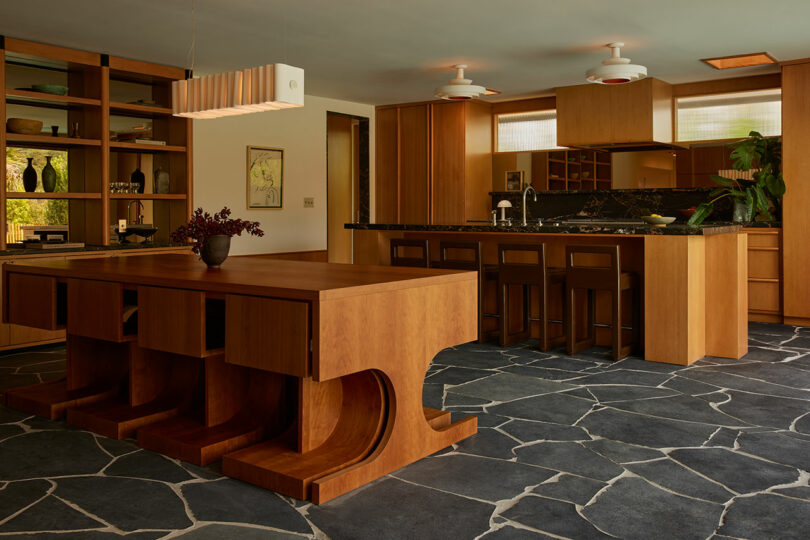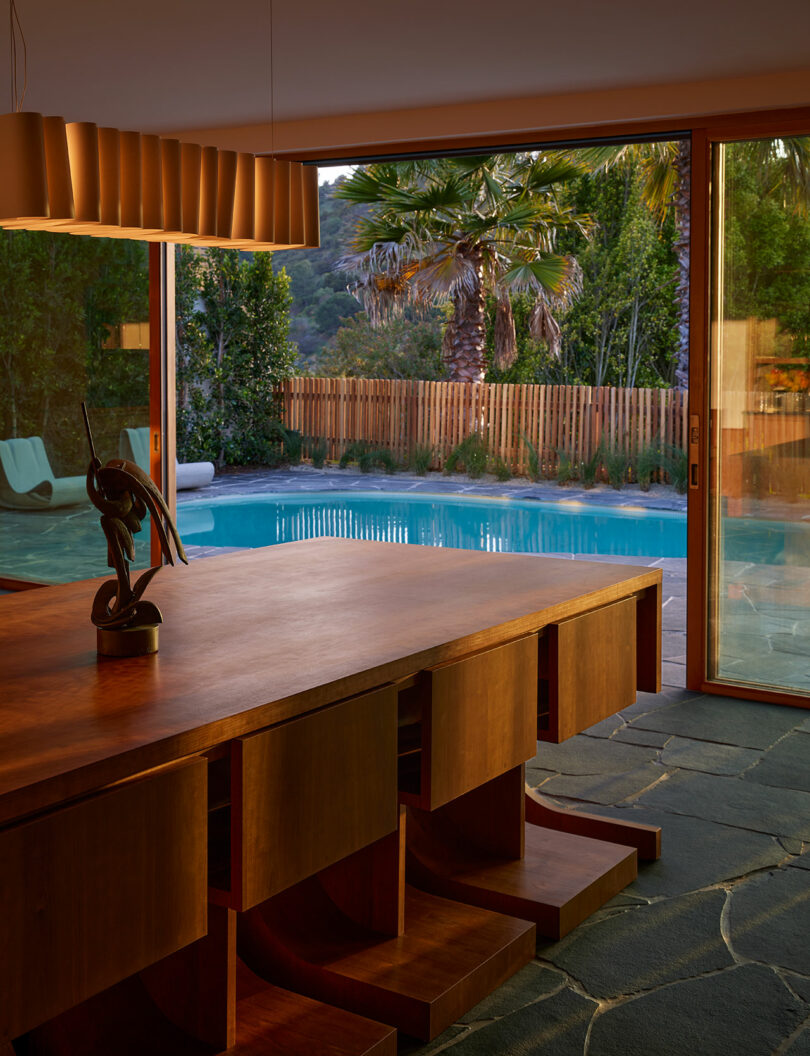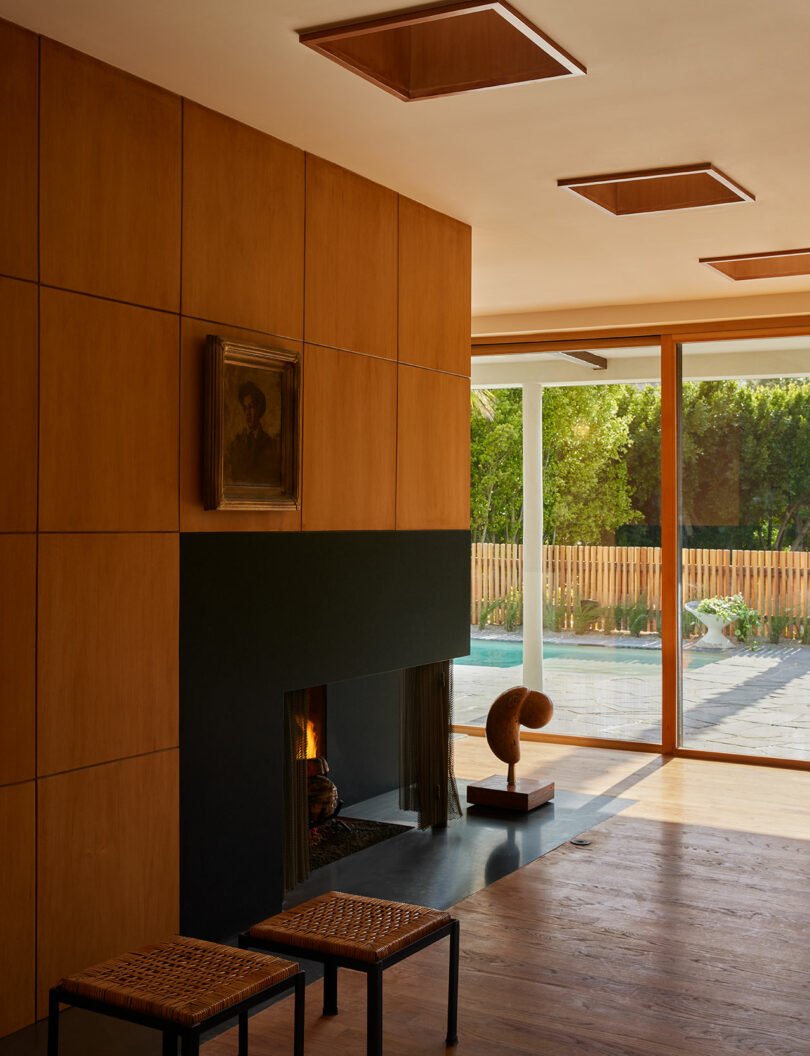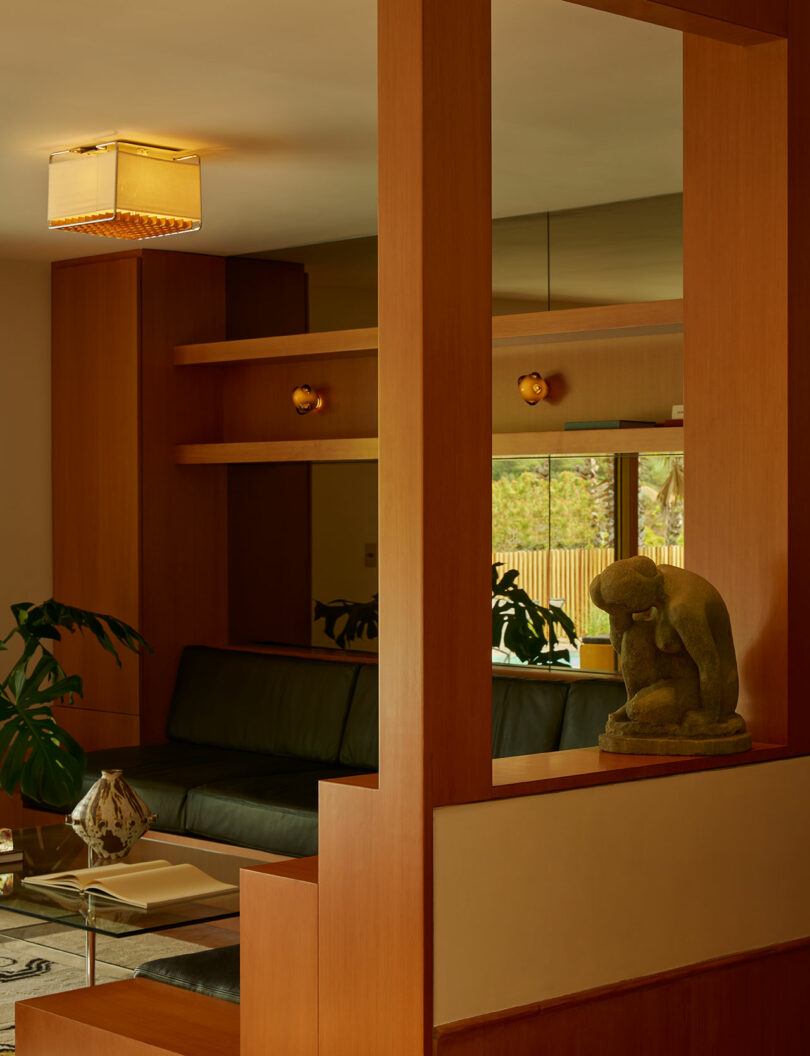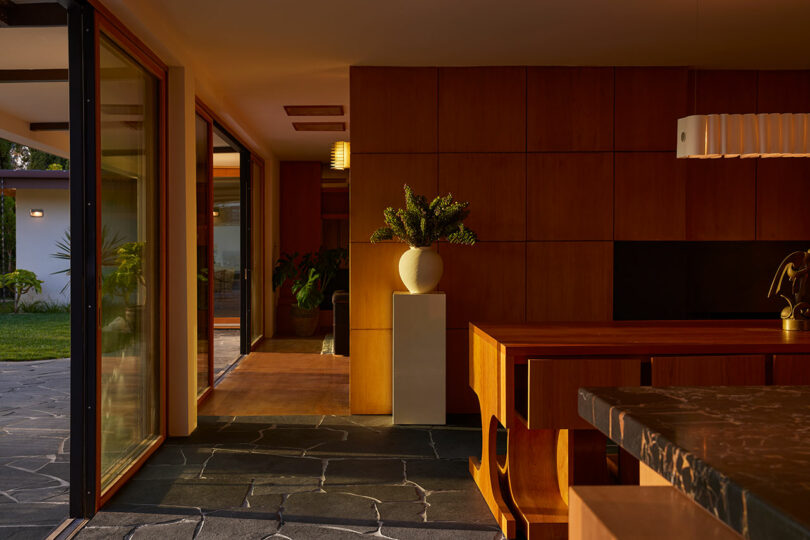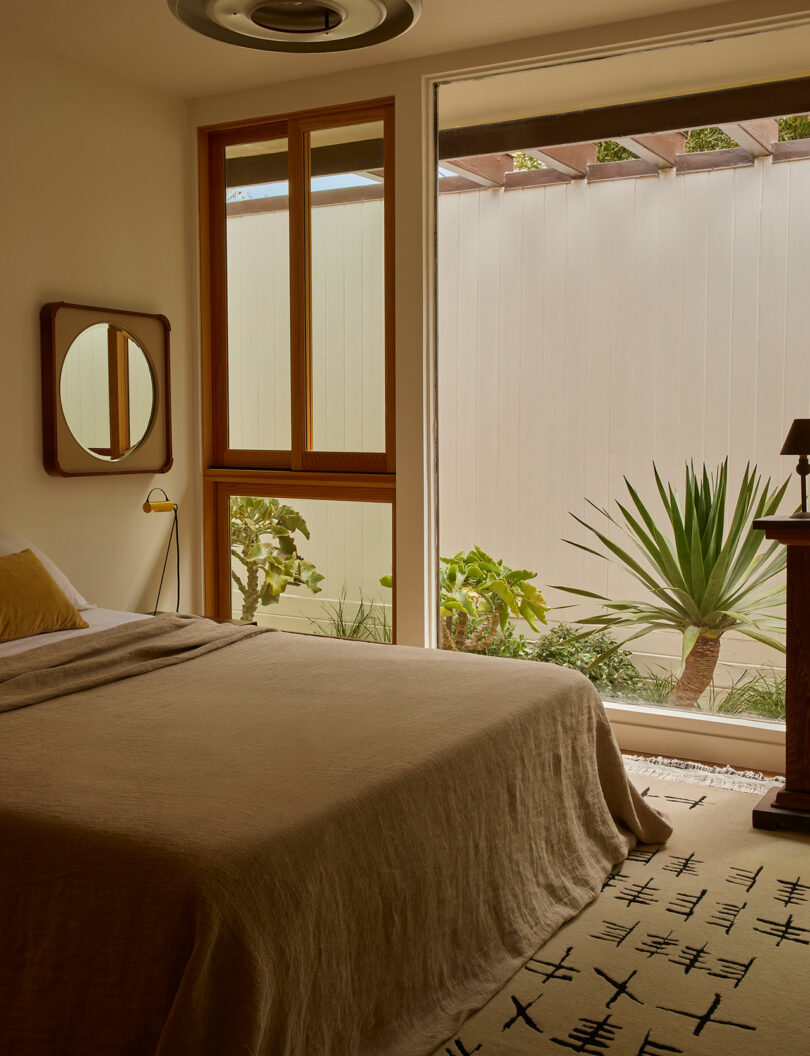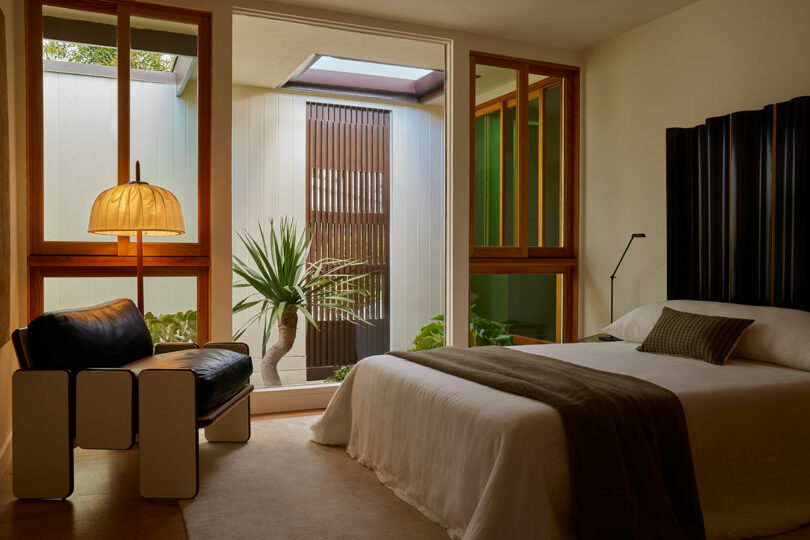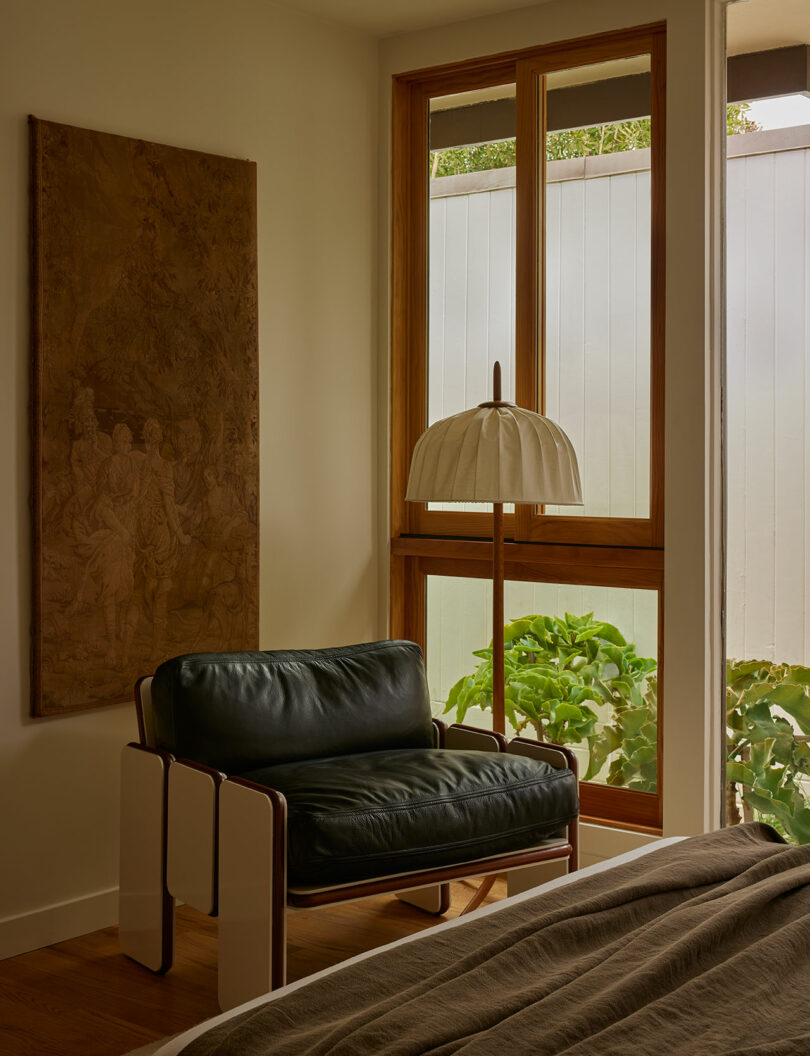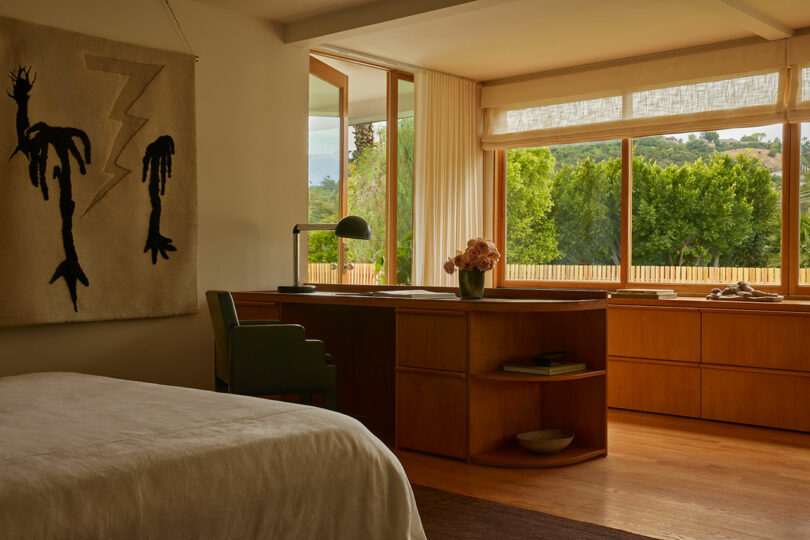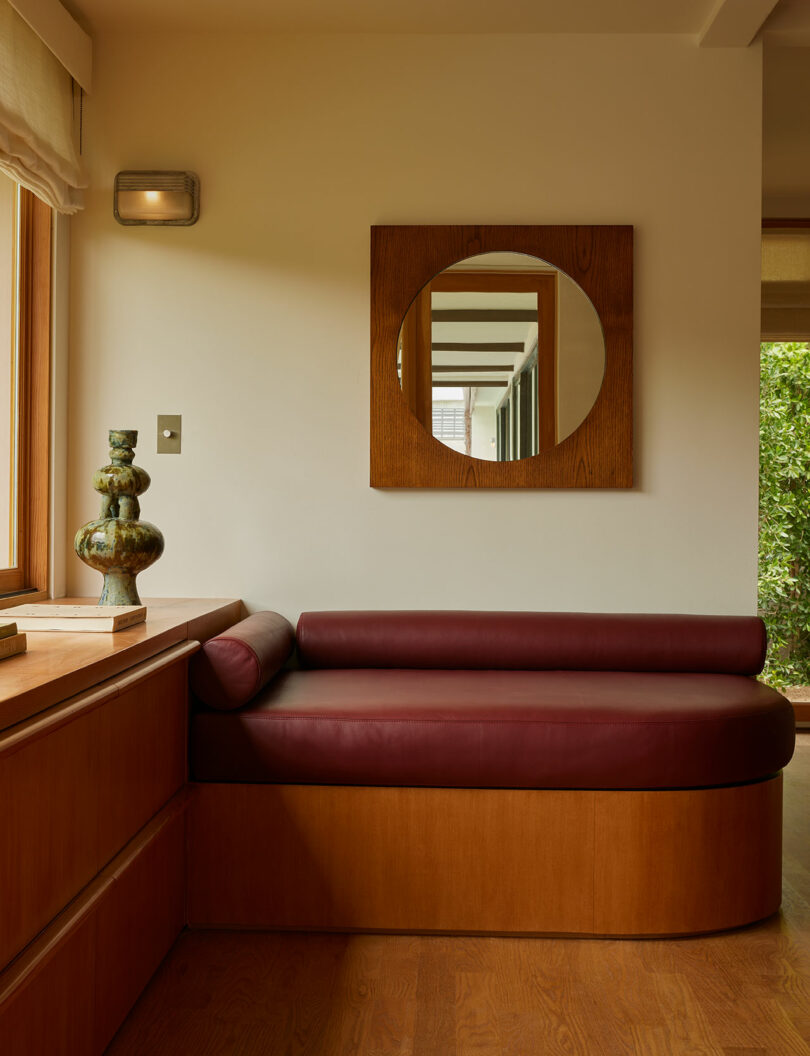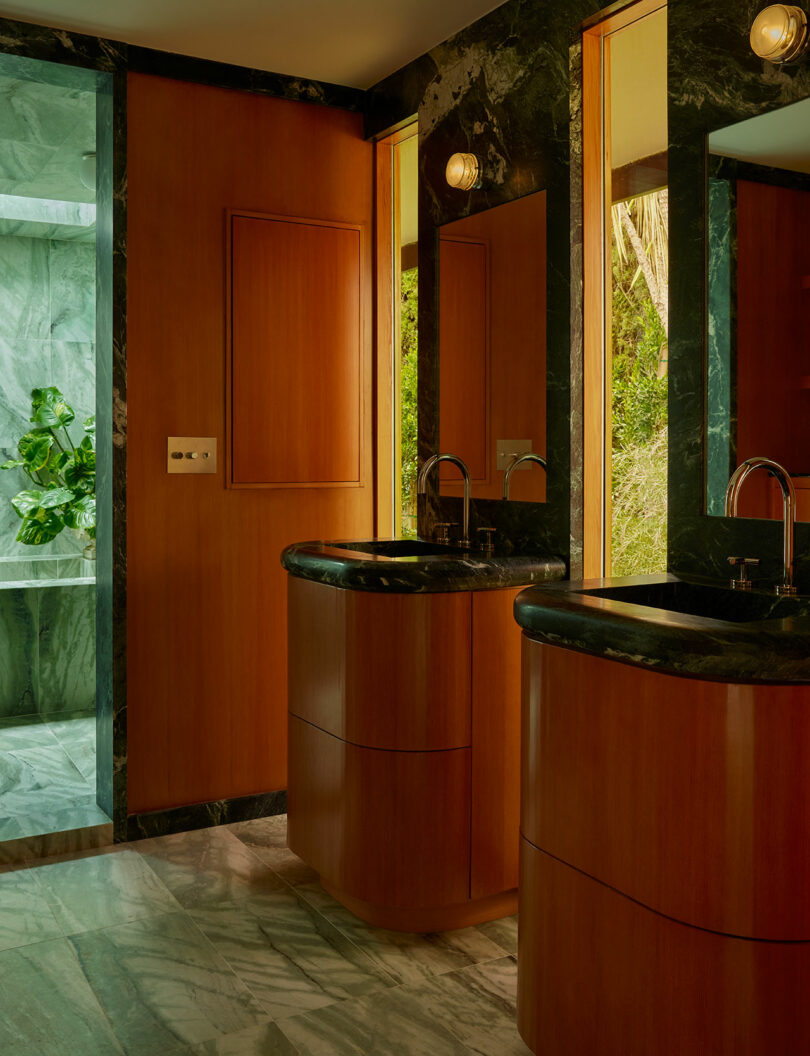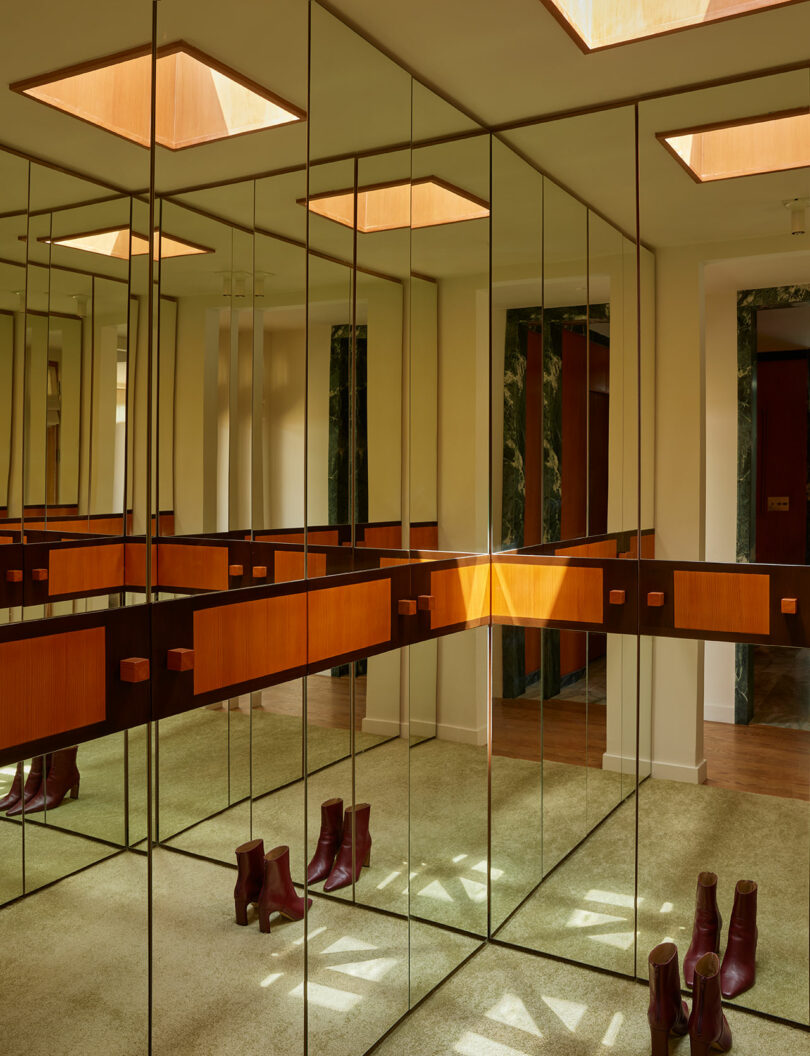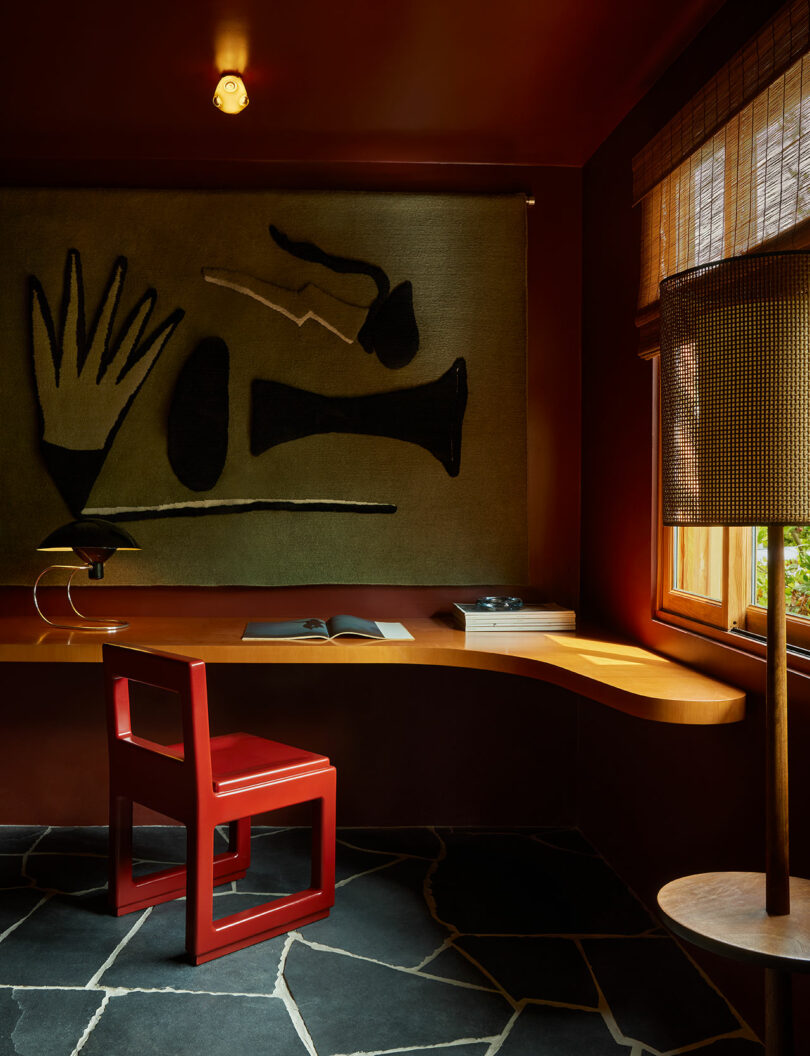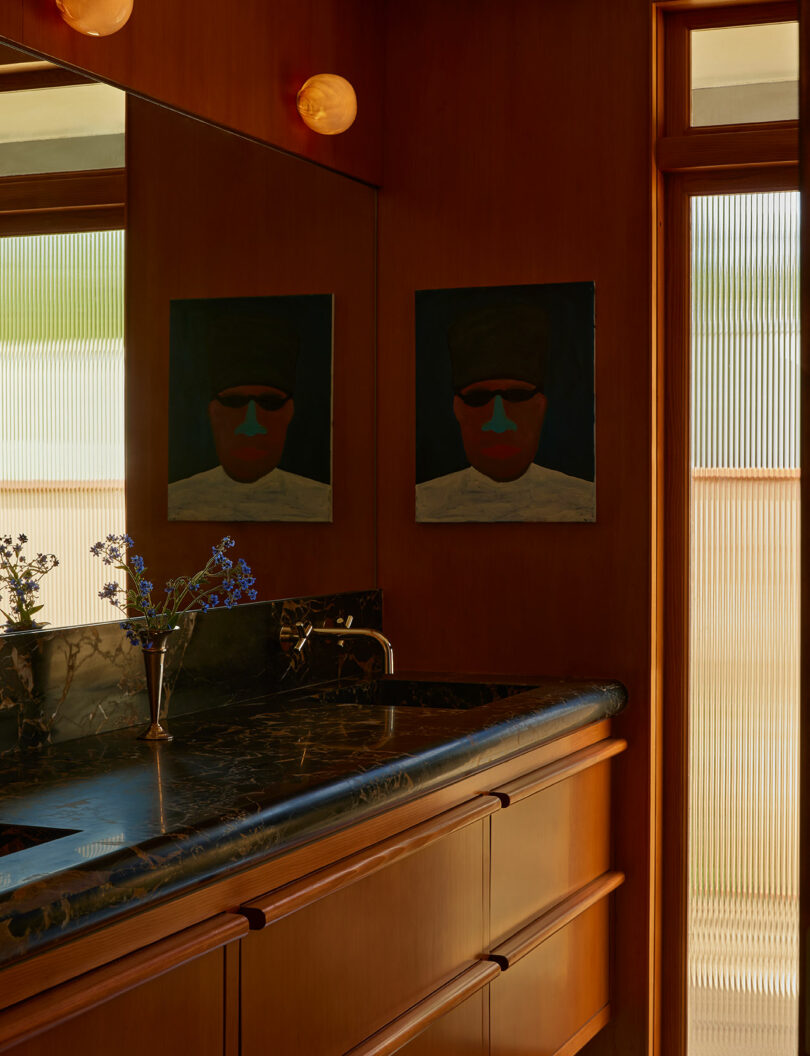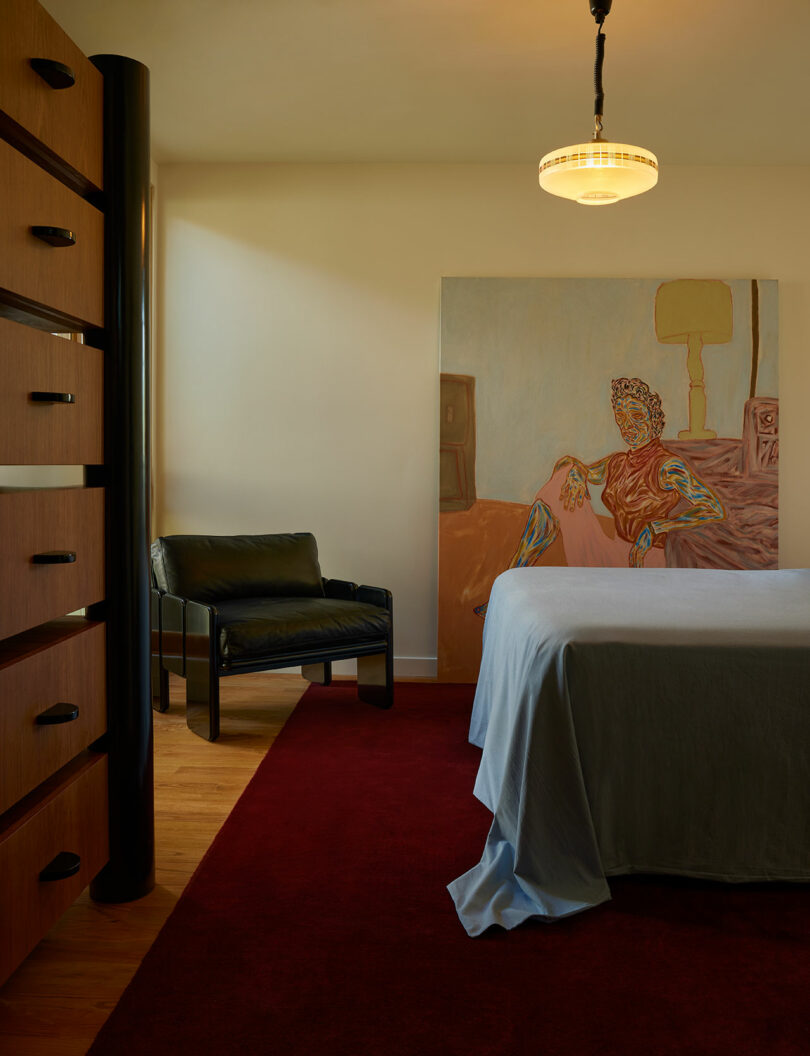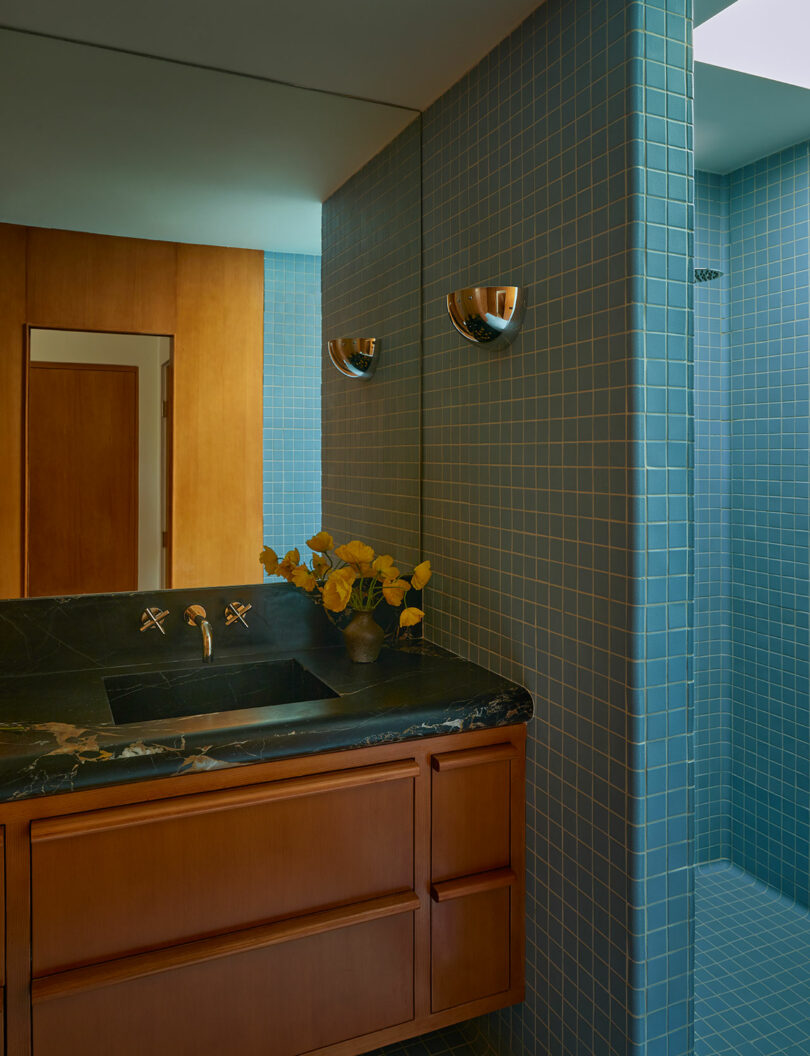Tucked into the wooded folds of Laurel Canyon, Los Angeles, someplace between legacy and residing, is the newly renovated CM G1 Home by inside design and growth studio Ome Dezin in partnership with L.A. based mostly furnishings and spatial designer Willett. To step inside is to hitch a playful dialogue nuanced in historical past the place modernity and reminiscence have interaction.
The Sixties-built residence now stands reimagined for an additional period – its mid-century bones rigorously uncovered and fleshed out with the utmost respect – boasting an inside structure that’s rigorously articulated whereas sensually human. Knowledgeable by a contemporary, refined perspective, Ome Dezin principals Jesse Rudolph and Joelle Kutner noticed the venture as opportune for pairing Willett’s imaginative and prescient with their proficiency in restoring character-driven properties.
For Willett, the auteur behind the venture’s inimitable interventions, the CM G1 Home is an ‘emotional panorama’ and train in human connection that modern residence constructing usually willfully ignores.
“We approached the design as a tribute to Laurel Canyon’s spirit of clever experimentation. The pure panorama and the historical past of the neighborhood grew to become our imaginative transient,” Willett says. “Customized, site-specific moments are woven all through the house, providing a still rhythm of discovery. Every factor – crafted and regarded – invitations a way of marvel, echoing the originality that defines the situation.”
Features of Wrightian ideology additionally echo within the construction’s preserved spatial openness, highly-considered performance, and linear circulate – all paramount to the renovation’s obvious success. Right here, the collaborators centered on sustaining neat horizontal gestures whereas introducing recent components like extensive sliders alongside the west facet, which permit the inside to spill out into the panorama. The duo additionally embraced a forward-thinking method to residence furnishings, harking back to a interval when furnishings grew to become sculptural stand-ins for the absent physique, quietly insisting on human scale inside more and more summary environments.
Willett’s modus operandi, additionally characterised by the corporeal intimacy of furnishings, references materials histories relationship again to the Sixties as effectively. Sultry Douglas fir recollects the house’s mid-century lineage whereas earthy marbles and grounding black flagstone root the house in its canyon web site. And a sequence of repeating skylights punctuate the ceiling to depart the partitions awash in pure airy.
The intimacy throughout the residence is palpable at any given second. A customized built-in system flows via the first bed room combining a desk, daybed, and casework right into a seamless gesture that’s each structure and furnishings – one other likeness to works by America’s most notable architect. Willett’s signature furnishings items – together with the Tonn Desk, Gio Stool, Radi Desk & Chairs, and Popo Chair – are elegantly built-in all through the CM G1 Home. These iconic silhouettes are complemented by recent, unique additions from his Early Works: Group 01 sequence, initially conceived for his private residence and marking the origins of his furnishings observe. What’s extra, the lately debuted leather-based Poporo eating chair, Popo counter stools, and the KOC Dresser sit alongside such unique designs.
Including to the layered interiors is a curated mixture of classic and modern components, with furnishings and ornamental items hand-selected by Ome Dezin from DEN, a Los Angeles ancient retailer, and choose works from cc-tapis’ Whispers Assortment by multidisciplinary artist Scarlett Rouge, making its U.S. premiere throughout the residence.
“My private philosophy manifests tangibly via the symbiosis between my furnishings items and the constructed surroundings we created round them,” Willett provides. “It’s one cohesive ecosystem for residing – the strains are blurred between constant and impermanent.”
That stress between what stays unaltered and what transforms has lengthy outlined architectural discourse with just a few important tutorial or stylistic actions dueling, decade by decade, all through the twentieth century. However the Sixties was marked by a fracture in architectural principle. Thought leaders – and subsequently the commerce’s most influential designers – grew to become cut up between these upholding the concept of practical programming and the formalists whose ideas sought to query these very social and aesthetic frameworks.
The CM G1 Home, nonetheless, resists strict binary considering. Right here, programming and poetry conspire, inside and outdoors coexist, and furnishings blurs the road between fastened and free. If the house’s surfaces evoke a specific architectural readability, its furnishings gesture in the direction of the existential consolation most beloved from the mid-century period.
Ome Dezin and Willett appear to share the best that structure is a relational, livable artform synthesizing thought and feeling. These highly-charged ‘emotional landscapes’ are usually not meant to be inaccessible workouts in principle, however environments designed for habitation, contact, and transformation via on a regular basis rituals.
If you end up alone there, Willett suggests, ignite the fireside and wrap up in a blanket on the built-in couch overlooking the pool and canyon. “I hope they really feel comfy,” he says. “They’ve all they should calm down, take pleasure in, and reside gracefully.”
He reminds us that good design, like good structure, shouldn’t be stationary. It’s a program we inhabit, a narrative we rewrite each day, an emotional panorama we supply inside us, even once we go away the home behind.
To see extra of the duo’s inimitable works, go to willettspace.com and omedezin.com.


